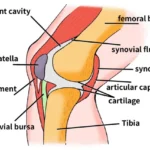Tips for Maintaining Arm Strength as You Age
As we age, maintaining arm strength becomes critical for preserving independence, mobility, and overall health. Arm strength supports daily activities like carrying groceries, lifting items, and maintaining balance. Without regular exercise, muscle mass and strength decline naturally, a condition known as sarcopenia. However, incorporating targeted strength training, stretching, and lifestyle changes can help slow this process. This article provides a comprehensive guide to maintaining arm strength as you age, alongside frequently asked questions.
Why Arm Strength Declines with Age
- Sarcopenia: This age-related muscle loss typically begins in your 30s and accelerates with time. By focusing on regular exercise, particularly resistance training, you can combat the effects of sarcopenia, which weakens muscles and limits mobility.
- Reduced Activity Levels: Many older adults experience a decline in physical activity, which contributes to muscle weakening. Consistently engaging in physical exercises can prevent atrophy and keep muscles strong.
Best Exercises to Maintain Arm Strength
- Resistance Training: Using resistance bands, dumbbells, or even household objects like water bottles can help build and maintain arm strength. Exercises like bicep curls, tricep dips, and shoulder presses are highly effective. Bicep curls can be done seated or standing, making them accessible for various fitness levels.
- Bodyweight Exercises:Push-ups (including wall push-ups) and chair dips are great for strengthening arm muscles without needing equipment. For example, wall push-ups can be modified for intensity by adjusting the distance from the wall.
- Grip Strength Exercises: Incorporating wrist curls and using handgrip trainers can help maintain grip strength, which is crucial for functional tasks like opening jars or carrying objects.
- Functional Movements: Exercises that mimic real-life activities, like the farmer’s walk (carrying weights while walking), are beneficial for improving arm strength and overall endurance. These exercises also promote coordination between the arms, core, and legs, enhancing balance and functional mobility.
Stretching and Flexibility
Flexibility is key to maintaining range of motion in your arms. Incorporating arm circles and wrist extensions into your routine can keep your arms flexible and help prevent stiffness. These exercises are especially beneficial after strength training sessions to relieve tension and improve circulation.
Low-Impact Activities
- Yoga and Tai Chi: These practices not only enhance flexibility but also build arm and shoulder strength through slow, controlled movements. They also improve posture and balance, reducing the risk of falls.
- Water Aerobics: This low-impact exercise provides resistance without placing stress on the joints, making it an ideal option for older adults looking to build arm strength.
Consistency and Safety
- Progressive Overload: Gradually increase the resistance or weight you use as your strength improves. This helps your muscles grow stronger over time. However, it’s important to listen to your body and not overexert yourself.
- Consult a Healthcare Provider: Before starting any new exercise routine, especially if you have pre-existing conditions, it’s essential to consult with a healthcare professional. This ensures that the exercises you perform are safe and appropriate for your fitness level.
Nutrition and Hydration
- Protein Intake: Ensure you’re consuming enough protein, which is essential for muscle repair and growth. Foods rich in protein like lean meats, legumes, and dairy products can support your muscle-strengthening efforts.
- Hydration: Staying hydrated is vital for muscle function and recovery. Dehydration can lead to muscle cramps and reduce your ability to perform exercises effectively.
Frequently Asked Questions (FAQs)
Q: How often should I exercise to maintain arm strength as I age?
A: Aim to engage in strength training exercises for your arms at least two to three times per week. Incorporating different exercises to target various arm muscles (biceps, triceps, shoulders) ensures comprehensive strength maintenance.
Q: Can I build arm strength without weights?
A: Yes! Bodyweight exercises like push-ups and tricep dips can effectively build arm strength. Additionally, resistance bands are an excellent tool for creating resistance without heavy weights.
Q: What are some signs that I’m losing arm strength?
A: Difficulty performing daily tasks such as lifting objects, opening jars, or getting up from a seated position may indicate a decline in arm strength. Regular strength training can help reverse this decline.
Q: How can grip strength exercises help me as I age?
A: Strong grip strength is associated with greater overall strength and functionality. Improving grip strength helps with tasks like carrying groceries, opening doors, and maintaining balance, all of which are essential for daily living and independence.
Q: Can strength training reduce the risk of injury?
A: Yes. Stronger muscles provide better support for your joints, which can reduce the risk of falls and other injuries. Strength training also improves balance and coordination, which are important for injury prevention.
Conclusion
Maintaining arm strength as you age is essential for preserving your independence, mobility, and overall quality of life. By incorporating strength training, flexibility exercises, and functional movements into your routine, you can stay strong, active, and capable. Always prioritize safety, start with appropriate resistance, and gradually increase the intensity as your strength improves. With consistency and attention to proper nutrition, you can enjoy the benefits of strong arms well into your later years.
Regular exercise, coupled with proper hydration and a balanced diet, will help keep your muscles healthy and capable as you age, allowing you to maintain your lifestyle and enjoy your daily activities with greater ease and confidence.





